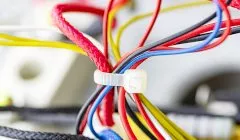Save
Rooftop solar in childcare centres could cut energy bills by millions
The analysis conducted by Parents for Climate has revealed that the installation of rooftop solar and batteries in early childhood education and care (ECEC) centres could lead to savings of up to $130 million a year on energy bills.
Rooftop solar in childcare centres could cut energy bills by millions
The analysis conducted by Parents for Climate has revealed that the installation of rooftop solar and batteries in early childhood education and care (ECEC) centres could lead to savings of up to $130 million a year on energy bills.

This initiative aims to shield these centres from future energy price increases, thereby reducing the financial burden on services and families. In 2023, it was found that depending on their location, childcare centres experienced a 14.7 per cent to 28.9 per cent hike in energy bills compared to the previous year. This is notably during a period when families are already grappling with a documented cost of living crisis.
In the context of global figures, childcare in Australia is more expensive than in many other OECD countries. In 2022, an average Australian couple with two children devoted 16 per cent of their net household income to childcare, contrasting with the OECD average of 9 per cent.
Parents for Climate's chief executive officer, Nic Seton, pointed out the disparity in the transition towards renewable energy within the sector. "Our analysis shows that while a small number of centres are already installing solar and saving money, the vast majority lack the capacity to access clean energy upgrades," Seton said. He highlighted that many centres face obstacles such as a lack of time and expertise to explore their options, with upfront costs being a significant barrier.
This research suggests that early childhood centres could achieve annual savings in their energy bills ranging between $12,400 and $14,600 if both federal and state governments extend the support for rooftop solar and battery installations, currently available to state schools, to the ECEC sector. So far, programmes to install air conditioning powered by rooftop solar have been initiated in state schools in New South Wales and Queensland, but similar support specifically targeted at the ECEC sector has yet to be established.

Tim Buckley, founder and director of Climate Energy Finance, indicated the broader implications of such a project. "A full rollout of solar on schools and early childhood centres would be the largest renewables project in Australia’s history," Buckley said. He elaborated on the potential benefits, such as stabilising the grid at the distribution level, especially as battery systems become more economically viable.
Seton also touched on the additional advantages of more affordable clean energy solutions, particularly for young children who are highly susceptible to heat-related illnesses. "We also know that more affordable clean energy solutions like rooftop solar would increase access to air conditioning and a safer environment for babies and young children," he stated.
Furthermore, Parents for Climate discussed how enhancing support for rooftop solar installations could tackle social inequality by alleviating operational costs in regions with lower socio-economic status. The organisation also identified other benefits of government support for rooftop solar and batteries in the ECEC sector and schools, including the creation of over 6,000 renewable energy jobs across Australia, a reduction of 1.35 million tonnes in carbon emissions annually, and contributions towards the Australian Government’s objective of sourcing 82 per cent of the country's power from renewable energy.

Expenses
Navigate Black Friday safely: Essential tips for global shoppers
As the global retail landscape gears up for another round of Black Friday and Cyber Monday sales, consumers worldwide are being advised to proceed with caution. HSBC, one of the leading financial ...Read more

Expenses
Expert tips to secure your financial safety net
New Zealanders are known for their "she'll be right" attitude, but when it comes to handling unexpected bills, being prepared is crucial. Read more

Expenses
Australians continue to opt for free VPNs, ignoring potential privacy risks
Australians, alongside citizens of Sweden, South Korea, and Mexico, are increasingly choosing to use free Virtual Private Networks (VPNs), despite the potential threats to their privacy. Read more

Expenses
Corporate Traveller identifies key strategies for business travel savings
Flight Centre Travel Group's Corporate Traveller, a premier service provider for managing SME travel, has shared several effective strategies that enabled their business clients to significantly ...Read more

Expenses
Price no longer the prime factor for energy bills
Many Australians are intrigued but unconvinced when it comes to greening their energy bill. Read more

Expenses
1 in 2 Aussie pet owners spends on their pets more than themselves
Does owning a pet eat into your monthly budget? You’re not alone. Read more

Expenses
The real reason Sydney’s petrol prices are so high
Sydney fuel prices may seem like they’re soaring, but a recent study indicates that they may be cheaper than you think. Read more

Expenses
Morrison backs big pharma, turns back to developing countries
Big pharma is currently fighting to maintain intellectual property protections over COVID-19 vaccines, with Australia refusing to act despite having no pharmaceutical companies. Read more

Expenses
Navigate Black Friday safely: Essential tips for global shoppers
As the global retail landscape gears up for another round of Black Friday and Cyber Monday sales, consumers worldwide are being advised to proceed with caution. HSBC, one of the leading financial ...Read more

Expenses
Expert tips to secure your financial safety net
New Zealanders are known for their "she'll be right" attitude, but when it comes to handling unexpected bills, being prepared is crucial. Read more

Expenses
Australians continue to opt for free VPNs, ignoring potential privacy risks
Australians, alongside citizens of Sweden, South Korea, and Mexico, are increasingly choosing to use free Virtual Private Networks (VPNs), despite the potential threats to their privacy. Read more

Expenses
Corporate Traveller identifies key strategies for business travel savings
Flight Centre Travel Group's Corporate Traveller, a premier service provider for managing SME travel, has shared several effective strategies that enabled their business clients to significantly ...Read more

Expenses
Price no longer the prime factor for energy bills
Many Australians are intrigued but unconvinced when it comes to greening their energy bill. Read more

Expenses
1 in 2 Aussie pet owners spends on their pets more than themselves
Does owning a pet eat into your monthly budget? You’re not alone. Read more

Expenses
The real reason Sydney’s petrol prices are so high
Sydney fuel prices may seem like they’re soaring, but a recent study indicates that they may be cheaper than you think. Read more

Expenses
Morrison backs big pharma, turns back to developing countries
Big pharma is currently fighting to maintain intellectual property protections over COVID-19 vaccines, with Australia refusing to act despite having no pharmaceutical companies. Read more













